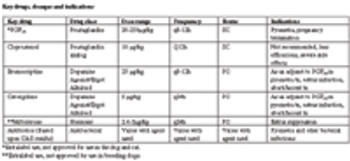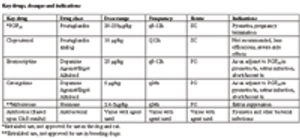
For the committed dog breeder, what begins with a single pet as a casual hobby evolves into an avocation that is truly life-transforming. Often their every minute and dollar are expended in pursuit of their chosen "dog sport:"

For the committed dog breeder, what begins with a single pet as a casual hobby evolves into an avocation that is truly life-transforming. Often their every minute and dollar are expended in pursuit of their chosen "dog sport:"

When puppies and kittens are born, they do not normally require assistance or resuscitation to survive. However, when neonates are stressed during parturition and the periparturient period, morbidity and mortality increase. Timely, effective intervention is required to successfully resuscitate a stressed neonate.

The objective of this session is to provide the practitioner with the knowledge required to effectively manage a canine breeding.

The objective of this session is to provide the general practitioner with factors to consider when contemplating the addition of theriogenology services to his or her practice.

The normal male dog attains puberty at approximately 6 – 8 months of age. Sexual maturity is generally attained at 18 – 30 months. Males may successfully breed bitches prior to sexual maturity but they will not achieve maximal fertility or daily sperm output until mature.

When pyometra occurs in a pet animal, the decision for surgical intervention is uncomplicated. When pyometra occurs in a valuable animal intended for breeding, the breeder client often opts for medical treatment.

Canine breeding management centers hinges on ovulation timing. Ovulation timing is important because it is critical to have viable spermatozoa in the bitch's oviducts at the time the eggs are mature and ready to be fertilized.

Published: April 1st 2010 | Updated:

Published: April 1st 2010 | Updated:

Published: April 1st 2010 | Updated:

Published: April 1st 2010 | Updated:

Published: April 1st 2010 | Updated:

Published: April 1st 2010 | Updated: